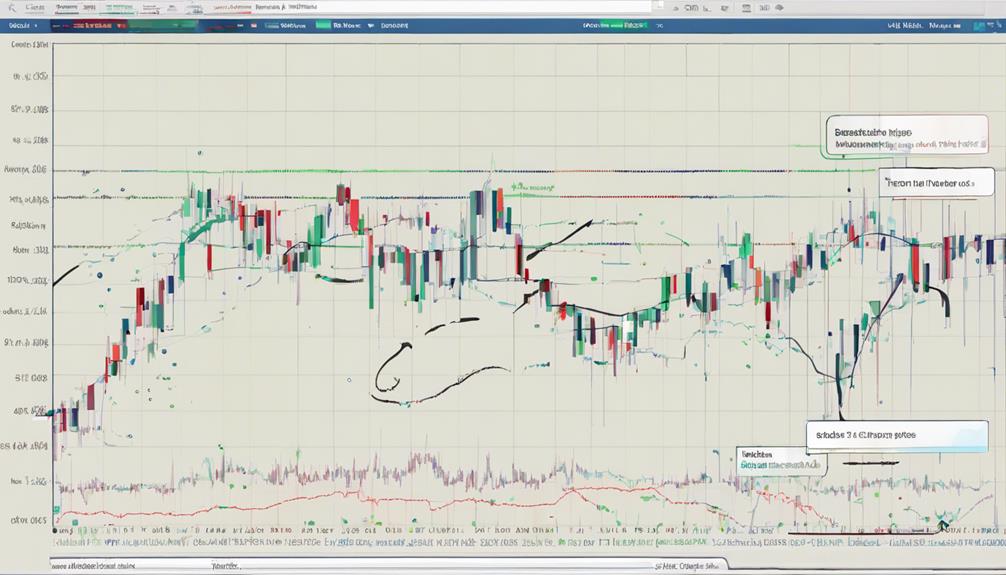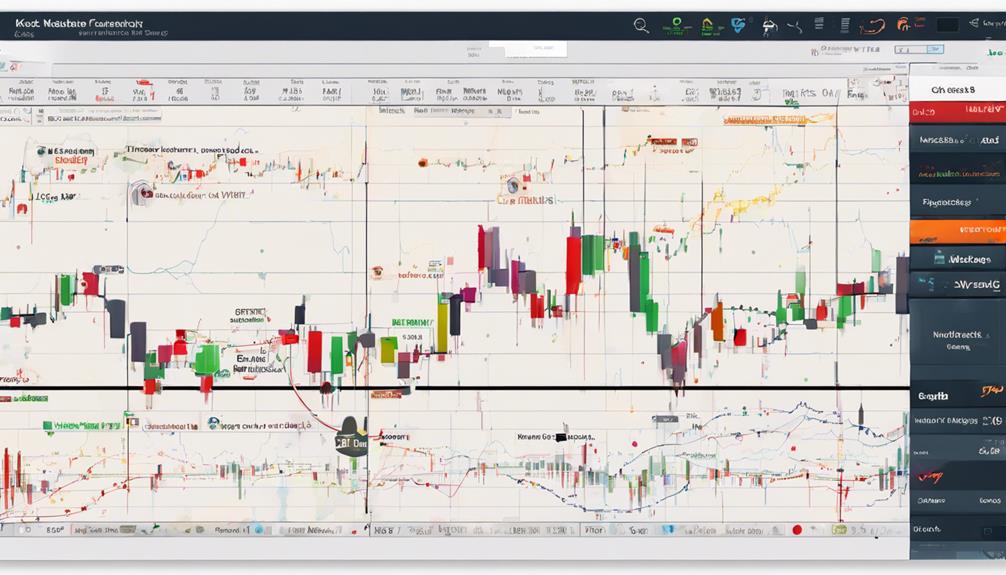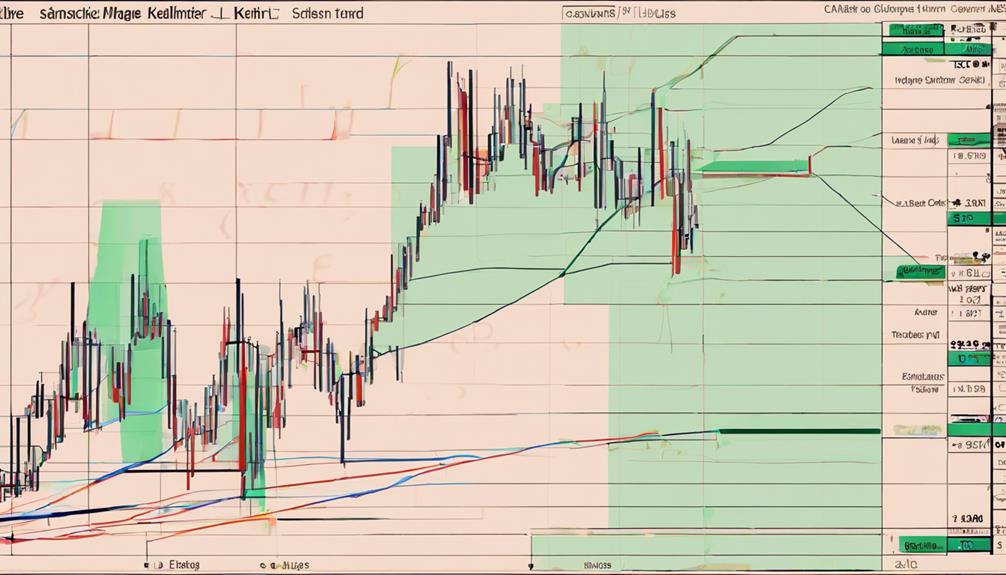In the realm of market analysis, the utilization of Keltner Channels serves as a valuable tool for traders seeking to navigate the complexities of trend identification and price movements.
By delving into the intricacies of this volatility-based indicator and understanding its implications on market behavior, traders can gain a competitive edge in their decision-making process.
The ability to spot emerging trends and anticipate market shifts through the lens of Keltner Channels offers a strategic advantage that could potentially redefine one's approach to trading.
Understanding Keltner Channels in Trend Identification
In the realm of technical analysis, understanding Keltner Channels plays a crucial role in accurately identifying market trends. Keltner Channels consist of three lines: the middle line, which is an Exponential Moving Average (EMA) used for trend assessment, and two outer bands – the upper and lower bands – based on the Average True Range (ATR) to account for price volatility. Traders often look at the proximity to the upper band to signal potential overbought conditions in an uptrend, while breaches below the lower band may indicate oversold conditions during downtrends, aiding in trend identification.
The Average True Range (ATR) used in Keltner Channels helps traders to assess the market's volatility, offering insights into potential price movements. By incorporating these volatility-based bands around the EMA, Keltner Channels provide a structured framework for traders to analyze market trends effectively. Monitoring how prices interact with the upper and lower bands within the Keltner Channel can offer valuable cues for short-term trend changes, enhancing market trend identification strategies.
Utilizing Keltner Channels for Market Analysis

Building upon the foundation of understanding Keltner Channels in trend identification, the application of these technical tools for market analysis offers traders a structured framework to assess price movements and make informed trading decisions based on volatility dynamics.
Keltner Channels, comprising an EMA middle line and dynamic upper/lower bands determined by the Average True Range (ATR), provide valuable insights into market trends. By observing the proximity of prices to the upper and lower bands, traders can discern potential bullish or bearish trends, aiding in trend identification. Analyzing price action within the Keltner Channels enables the spotting of trend reversals and continuations, crucial for making informed trading decisions.
Monitoring price movements in relation to the bands allows traders to confirm trends and adjust their strategies accordingly. This visual assessment of market trends and volatility levels empowers traders to navigate the markets with a more comprehensive understanding of price dynamics.
Identifying Market Trends With Keltner Channels

Utilizing Keltner Channels as a technical indicator provides traders with a structured approach to identifying and confirming market trends based on price proximity to the upper and lower bands. A bullish trend is recognized when prices consistently touch or exceed the upper band, indicating upward momentum in the market.
Conversely, a bearish trend is identified when prices consistently touch or fall below the lower band, signaling a downward trend. Traders also rely on the middle line, typically an Exponential Moving Average (EMA), to assess short-term trend direction within the market.
Enhancing Trading Strategies With Keltner Channels

Enhancing trading strategies with Keltner Channels involves integrating dynamic price analysis within structured decision-making frameworks. Traders can optimize their strategies by utilizing the Upper and Lower Channels as well as the middle band to assess market conditions effectively.
These channels provide valuable insights into potential breakouts and trend reversals, allowing traders to make informed decisions based on price action within the channel boundaries. By incorporating Keltner Channels into their trading approach, market participants can identify optimal entry and exit points while managing risk more efficiently.
The dynamic nature of Keltner Channels enables traders to adapt to changing market conditions, enhancing the overall effectiveness of their strategies. Utilizing Keltner Channels not only aids in confirming market trends but also assists in establishing robust trading strategies that combine trend identification with volatility analysis for improved decision-making.
Keltner Channels for Predicting Market Movements

Keltner Channels serve as a reliable tool for anticipating market movements by providing visual indications of price proximity to upper and lower bands. When prices close outside the Keltner Channel boundaries, it can signal potential market turning points, offering valuable predictions for traders.
Reversal signals are often confirmed by price rejection at key support or resistance levels, highlighting the significance of understanding market structure levels. By analyzing price behavior relative to the Keltner Channel boundaries, traders can identify trends and make informed predictions about market movements.
This approach helps traders anticipate potential reversals or continuations in price trends based on how the price interacts with the upper and lower bands of the Keltner Channels. By incorporating these insights into their trading strategies, traders can enhance their ability to predict market movements and make well-informed trading decisions.
How Can Keltner Channels Help in Identifying Market Trends for Trading Analysis?
Keltner Channels are considered one of the best short-term trading analysis techniques. They help identify market trends by using volatility to generate buy and sell signals. By analyzing the upper and lower channel bands, traders can gauge potential entry and exit points, making them a valuable tool for trading analysis.
Frequently Asked Questions
What Is the Best Indicator to Use With the Keltner Channel?
The best indicator to use with the Keltner Channel is the Exponential Moving Average (EMA) for trend confirmation. This pairing enhances trend analysis and provides valuable insights into market direction, aiding traders in making informed decisions.
Is Keltner Channel Strategy Profitable?
The profitability of the Keltner Channel strategy is well-documented, showcasing its effectiveness in predicting market movements. When combined with other indicators and sound risk management practices, traders can enhance profitability and optimize trading outcomes.
How Do You Read a Keltner Channel Indicator?
Reading a Keltner Channel indicator involves tracking price movements relative to the upper and lower bands for potential overbought or oversold conditions. Breakouts above the upper band signal bullish trends, while breakdowns below the lower band suggest bearish trends, aiding in market trend analysis.
How to Day Trade With Keltner Channels?
Day trading with Keltner Channels involves monitoring price movements relative to the upper and lower bands, identifying entry points at band crossovers, confirming trends with the middle EMA line, and utilizing other indicators for signal confirmation and risk management.
Conclusion
In the dynamic world of trading, utilizing Keltner Channels can be likened to a skilled navigator steering through turbulent waters with precision and foresight.
By harnessing the power of this volatility-based indicator, traders can chart a course towards profitable outcomes, anticipate market trends, and adapt strategies accordingly.
With a keen eye on market conditions and a strategic approach, success in trading becomes not just a possibility, but a probability.
